- Home
- Peter Ackroyd
Alfred Hitchcock Page 2
Alfred Hitchcock Read online
Page 2
So he invented games for himself, and played alone. He was also too defensive, and too proud, to encourage intimacy. One journalist, observing him sitting on the set waiting for the crew to prepare, noted that “he is likely to be sitting alone, with the look of a fat boy who has run away from the cruelty of his contemporaries.” In later life he seemed to have had a hatred of small boys. He scared the life out of one young actor, or “minor,” Bill Mumy, when he bent down and whispered, “If you don’t stop moving about, I’m going to get a nail and nail your feet to the mark, and the blood will come pouring out like milk.”
And he watched. He watched the others in the class and in the playground. He said the same about his family life. “At family gatherings,” he told an interviewer, “I would sit quietly in a corner, saying nothing. I looked and observed a good deal. I’ve always been that way, and still am.” Watching provides a definite form of pleasure. It involves the mastery of the observer, absorbing the details of people and of places, even discerning plots and patterns not seen by the participants. It is the gaze that captures the world. It also furnishes a sense of safety, and even of invulnerability. The observer is removed from any threatening consequences. It may of course also lead to voyeurism, a theme much explored in Hitchcock’s films.
Watching was accompanied, or enlarged, by another passion. From an early age he began to visit the picture palaces. He saw his first films at the age of eight or nine. They were short, running for three or four minutes, with titles such as A Ride on a Runaway Train or Hal’s Tours and Scenes of the World. They exploited the realism and immediacy of the new medium. When a train seemed to hurtle towards the screen, some of the audience would scream and duck under their seats. Hitchcock himself recollected how others would wet their seats in excitement or terror. “The stories weren’t much, you know,” he recalled, “but it was a wonder to watch them.”
He came of age with the cinema itself, and in his teenage years he saw the films of D. W. Griffith, of Douglas Fairbanks senior, Harold Lloyd and Mary Pickford. The first Chaplin silent films were released in England when Hitchcock was fourteen. Picture palaces had become as popular in the East End as music halls; in Hitchcock’s own neighbourhood stood the Palaceadium on White Horse Road, around the corner from the fish shop in Salmon Lane, the Poplar Hippodrome and the Gaiety Cinema on East India Dock Road, the Ideal Picture Palace on Ming Street and the Premier Electric Theatre on Leytonstone High Road.
By strange coincidence Hitchcock’s early North-East London neighbourhood was the first home of the British film industry, with the river Lea and Epping Forest providing a suitable setting for short tales of adventure and intrigue. The first purpose-built studio was constructed at Whipps Cross, while the British and Colonial Kinematographic Company was located on Hoe Street, Walthamstow. Broadwest Films, who made The Merchant of Venice in 1916, was based in Wood Street, Walthamstow, while Tiger Films could be found in a nearby tram depot. Walthamstow itself became known as “the English Hollywood,” with one fifth of all studio space to be found there. So Hitchcock was in the right environment.
From an early age he was reading the trade papers. From a bookshop off Leicester Square he bought The Bioscope as well as the Kinematograph and Lantern Weekly. He already evinced what might be called a professional interest. With his parents he also attended the annual circus on Wanstead Flats and visited the Stratford Music Hall with its diet of variety acts, dioramas and Italian operettas.
He had other interests. It was not difficult to take the bus into Fleet Street and alight at the stop just before the Old Bailey. It was an institution he relished. In later life he could recall the exact floor plan of the central criminal court. He was attracted to the trials of murderers and, in particular, murderers of women. He collected a library of criminal cases and of crime fiction, and on at least one occasion visited the Black Museum of Scotland Yard. “I have always,” he wrote, “been fascinated by crime. It’s a particularly English problem, I think.” Even in later life he took particular pleasure in reading the transcripts of sensational cases, such as an episode when the judge started interrogating the notorious serial killer, John Christie, at the trial in 1953. The judge emphasised the following words, with slight emendations.
JUDGE: And you killed her.
CHRISTIE: Yes, Your Honour.
JUDGE: And assaulted her, too?
CHRISTIE: I believe so, Your Honour.
JUDGE: Before, during or after death?
CHRISTIE: During, Your Honour.
This case against the killer, whom Hitchcock called “that adorable Christie,” so fixed itself in the imagination of the film-maker that he used the same set of circumstances in Frenzy in 1972.
In later life he confessed that he might have enjoyed the role of a prosecuting barrister or a hanging judge. But he never, ever, wished to be a policeman. His interest in crime, therefore, can be seen as part of his passion for theatre. With his parents he visited the West End and saw the latest plays. According to his authorised biographer, John Russell Taylor, he could happily sit for hours discussing the theatrical world of his youth “about which…his knowledge was encyclopaedic and his enthusiasm profound.” There is much that is intensely and innately theatrical about Hitchcock’s work. Several films, such as Rope and Murder!, were based on stage plays, while the principal scenes from a number of others are set upon a literal stage where the camera simply moves beyond the proscenium arch. The theatre and the cinema are deeply intertwined in Hitchcock’s imagination, deriving from those early days when they were closely linked, with films often shown in theatres.
. . .
He left school at the approved age of thirteen, by which time a child was deemed ready to choose a profession for life. Hitchcock told his parents that he wanted to be an engineer, an eminently safe and suitable career, and so he was enrolled at the London County Council School of Marine Engineering and Navigation on Poplar High Street; he studied mechanics and acoustics, but was also engaged in making working drawings of various machines. This period of training was enough to gain him employment, in November 1914, at W. T. Henley’s Telegraph Works Company Limited in Blomfield Street off London Wall in the City. This was the head office of a company that specialised in manufacturing insulated wires and cables with a special interest, during this period, in submarine cables and other forms of bombproof communication.
Hitchcock was a junior technician associated with the sales department. He worked as a “technical estimator” for the size and voltage of electric cables. By his own account he was often idle and allowed the estimates to pile up on his desk until he had no choice but to deal with them; then, again by his own account, he worked at a prodigiously fast rate. His choice of engineering as a steady career must have been confirmed by the death of his father from chronic emphysema in the month after Hitchcock joined Henley’s. His older brother took over the fish shops, while Hitchcock and his mother still lived above 175 Salmon Lane from where Hitchcock commuted to his job in the City. There are some reports that mother and son moved back to Leytonstone but this cannot be verified.
Neither Leytonstone nor Limehouse, however, were immune from the steady bombardment of the First World War. For a young man of Hitchcock’s nervous condition, the diet of terror from the skies would have been something of a genetic shock; nothing could destabilise the order of the world more savagely. In early 1915 the Zeppelins were seen in the sky above Leytonstone; Limehouse and the area of the river were prime targets for the German bombs; Poplar was hit particularly badly. German submarines were spotted in the Irish Sea, and from everywhere came talk of sabotage and saboteurs. Some of Hitchcock’s earlier films reflect that mood of panic and even of hysteria. He never forgot it. He re-created the first Blitz in his direction of The Birds when the birds attack the beleaguered Brenner household. “The bombs are falling, and the guns are going like hell all over the place!” he said. “You don’t know where to go…You’re caught! You’re trapped!”
Ye
t in most later interviews Hitchcock tended to suppress the memories of the terror he must have experienced, and chose to concentrate instead on some of the war’s tragi-comical moments which he associated with his mother. One evening he returned home to find that artillery fire had exploded near his house. He rushed into his mother’s bedroom, to find her trying to put on her clothes while still wearing her nightgown. On another occasion, during an air raid, he remembered “my poor Elsa Maxwell plump little mother, struggling, saying her prayers, while outside the window, shrapnel was bursting around a search-lit Zeppelin.” In a third anecdote he was sheltering under a table with his mother while, kneeling, she continually crossed herself.
. . .
At the age of sixteen, Alfred Hitchcock encountered the life and work of Edgar Allan Poe. “I felt an immense pity for him,” he noted, “because, in spite of his talent, he had always been unhappy.” The childhood of Poe had been one of fear and trembling; he had been sensitive and vulnerable to every slight, and thus had become retiring and unsociable. As an adult he always dressed in black, and adopted an almost ritualistic manner of living in the world; he sought formal restraint to discipline the miseries and longings of his morbid nature. But he had also an abiding need for female sympathy and protection; as a result he idolised certain women with disastrous consequences. Poe’s unhappy life made a deep impression upon the young Hitchcock.
He began reading Poe’s short stories. The victim in “The Pit and the Pendulum,” never named, first sees the white lips of the judges issuing the decree of Fate. He is taken down—down innumerable steps—to a stone dungeon in the centre of which opens a vast pit. It is a world of all-pervasive fear and threat. He has been removed to a claustrophobic arena of horror without knowing the reason. He is not guilty of any offence but he is being punished. He is perhaps aware of being watched by an unseen audience, somewhere in the darkness, which takes a particular interest and even pleasure in his unhappy condition.
Then he glimpses with horror a monstrous scythe descending upon him inch by inch with slow and steady sweep; he could hear its hiss and sense its acrid smell even as it cuts through the outer layer of his garments. It hangs down like a figure of dread. But then the enemies of his accusers suddenly appear, and he is freed. Was it a dream? What is its meaning? Poe carefully calculated and planned his narratives to create a surreal logic of anxiety and dread; they deal in doubles, in self-destruction summoned by “the imp of the perverse,” in idealised heroines, and in protagonists who have a horror of the invading eye. This is the world of Poe that Hitchcock pondered. Forty-five years later Hitchcock wrote that “I can’t help comparing what I’ve tried to put in my films with what Edgar Allan Poe put in his novels.”
. . .
He enrolled with a cadet regiment of the Royal Engineers at the age of seventeen; he and other young workers at Henley’s received evening briefings, with marches and drills at the weekend. It was one of the war’s futile gestures, of course, but he could not be accused of lack of patriotism. In 1917, he came of age to be called up for service, but he was excused with a “C3” classification; whether this was due to his size, height, or some unnamed medical problem, he was consigned to a group of men who were “free from organic diseases” and able “to stand service conditions in garrisons at home.” He could then have undertaken “sedentary work” as a cook or storeman but, fortunately for him, the war was almost over and his services were not required.
He found sedentary work of a more pleasurable kind, however, when he enrolled for night classes at the Art Department of Goldsmiths College, part of the University of London, where he honed his skills in draughtsmanship and indulged his burgeoning love of art. He was sent out to sketch people and buildings, with particular attention to light and shadow. At a later date he explained to his fellow director François Truffaut that “one of the first things I learned in the School of Art was that there is no such thing as a line; there’s only the light and shade.” Light and darkness form the figure.
He was also encouraged by his teachers to frequent museums and art galleries in search of inspiring work, and in a period of greater affluence he purchased work by Dufy, Utrillo, Roualt, Sickert and Klee. According to his daughter, Patricia Hitchcock O’Connell, he appreciated non-figurative art as long as it was agreeable to the eye but he had no interest in any symbolic significance or inner meaning.
His presence in the evening classes at Goldsmiths did not go unnoticed by the managers of Henley’s and, in 1919, he was moved from sales to advertising. Here he learnt how to design layouts as well as to write the copy that accompanied them; he illustrated brochures, and edited them. Promotion, and publicity, now became his forte. His skill may have lent him confidence because he was no longer the shy and lonely schoolboy. There is a photograph of him on board ship for a company outing down the Thames; he is wearing a straw hat and double-breasted suit, and is smoking a cigarette. He was already well known for his “fooling” and an almost irrepressible stream of wit and humour. He organised the Henley soccer club and took part in billiards. It may have been in this period that he began taking dancing lessons at the Cripplegate Institute in Golden Lane.
In 1919 he founded and edited the Henley Telegraph, sold to the staff for threepence. Like most editors of small publications he was obliged to provide some of the copy himself, and in the first issue of June 1919 a curious short story appeared. “Gas” is a piece of Grand Guignol with an ironic twist, heavily influenced by Poe with a small dash of Saki. He may, perhaps inadvertently, have aspired to the condition of the “fat boy” in The Pickwick Papers. “I wants to make your flesh creep.” It demonstrates that Hitchcock had a macabre imagination and a sense of humour; six stories followed in other issues of the little magazine, all of them marked by parody, comedy and melodrama. These characteristics would quickly become evident in his first work for the cinema.
At this age, by his own account, he was indeed already fat but also ambitious; he may have been ambitious because he was fat. He was always self-conscious about his weight. He was never entirely committed to Henley’s; it seems that he was too light-hearted, and too casual with the necessary reports and records. He did not quite fit in. He had by now lost interest in advertising and was not happy with a salary of fifteen shillings per week.
He had kept a keen eye on the film trade papers, and soon learned that “Famous Players-Lasky” had decided to set up a studio in Poole Street, Islington, in North London. This was the company that provided the films for Paramount Pictures. On its arrival in London, Famous Players-Lasky British Producers Limited, as it was called for the occasion, inserted advertisements for various employees—among them “captioneers” who wrote and illustrated the captions that directed the narrative of the silent films. After two years of illustrating and writing advertisements for Henley’s, this was Hitchcock’s opportunity.
He discovered that Famous Players-Lasky had chosen, for its first film, The Sorrows of Satan by Marie Corelli. He read the novel and, with some help from his colleagues in the advertisement department, he created a series of designs and captions for the proposed film. He also compiled a portfolio of his recent work for the department. He took these to the new studio in Poole Street, where he received an unpleasant surprise. The Sorrows of Satan had been discarded, and instead Famous Players-Lasky had decided to concentrate upon two other films, The Great Day and The Call of Youth.
It was at this point that his perseverance and energy won through. Immediately he began work on the newly chosen films and, within a day or two, arrived at Poole Street with the appropriate material. His speed and evident talent impressed the managers of the company, and he was employed on a part-time basis to provide the designs and graphics. He was in effect moonlighting, working for the film company while at the same time being employed by Henley’s, but it appears that he paid a portion of his supplementary income to his immediate superior who allowed him the time and space to create a world of film.
His pe
rsistence was successful and, at the end of April 1921, Hitchcock became a full-time employee of Famous Players-Lasky. The Henley Telegraph announced his departure: “He has gone into the film business, not as a film actor, as you might easily suppose, but to take charge of the Art Title Department of one of the biggest Anglo-American Producing Companies. We shall miss him in many ways, but we wish him all success.” That success would be greater than anyone at the time could possibly have imagined.
2
I’LL DO IT
Thomas Burke, a novelist and essayist, was invited to visit the recently established studio in Islington. He remarked, in a piece entitled “In the Streets of Film Land,” that it was “a dismantled power station—a tremendous barn of a place which, despite the warm day, struck coldly.” It was “lofty and full of echoes, and its floor was littered with thick lines of lighting cables.” Little islands of fabricated sets were placed along the sides, and next to some of them costumed actors waited for their cues. Since the films did not require their own sound to be recorded, more than one film could be made at the same time.
The camera and the cameraman were placed in front of the set in use, close to a more bulky stills camera. The continuity girl sat nearby, making notes. Burke had expected tumult and shouting but “the only persistent noise was the hiss of the arc-lamps.” Then he heard the voice of the director or producer. “We’ll just have that over again, Miss Gwyn. Like this, you see.” Strange phrases were uttered. “Cross it.” “Kill it.” “Iris.” And then came the call “Light ’em up!” The director took up his megaphone and without any excitement or urgency issued his directions: “Camera. Come on, butler. Come on, detective. Come on, lady’s maid…Now for his right arm…Knee in his back…Down him…Struggle…Fix him. Fine!” Then the call came of “Lights out!” The action was over.

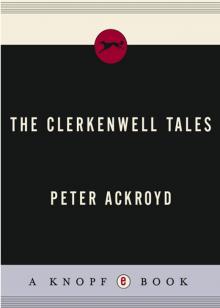 The Clerkenwell Tales
The Clerkenwell Tales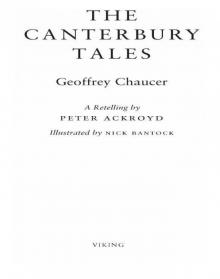 The Canterbury Tales
The Canterbury Tales J. M. W. Turner
J. M. W. Turner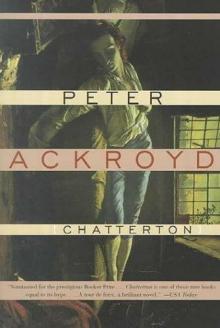 Chatterton
Chatterton The Canterbury Tales – A Retelling
The Canterbury Tales – A Retelling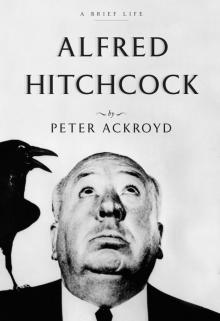 Alfred Hitchcock
Alfred Hitchcock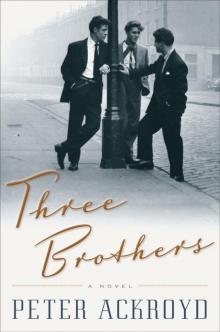 Three Brothers
Three Brothers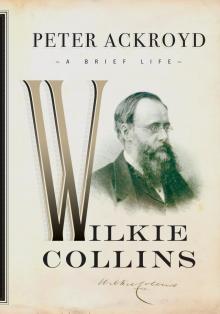 Wilkie Collins
Wilkie Collins Venice
Venice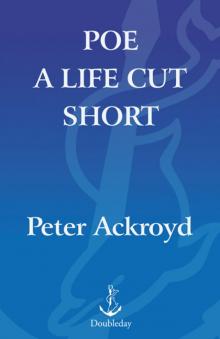 Poe
Poe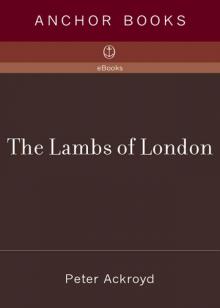 The Lambs of London
The Lambs of London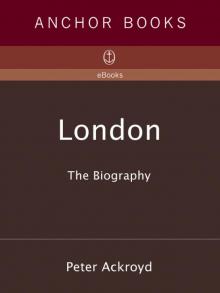 London
London Queer City
Queer City Revolution, a History of England, Volume 4
Revolution, a History of England, Volume 4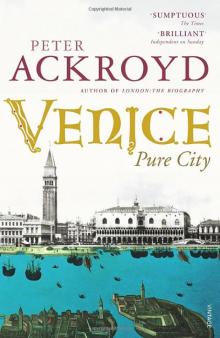 Venice: Pure City
Venice: Pure City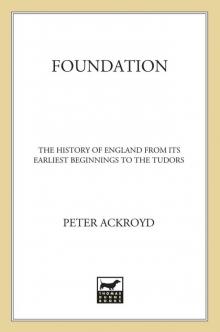 Foundation
Foundation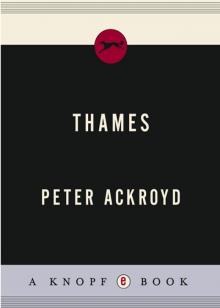 Thames
Thames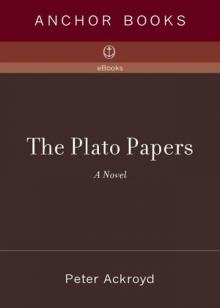 The Plato Papers
The Plato Papers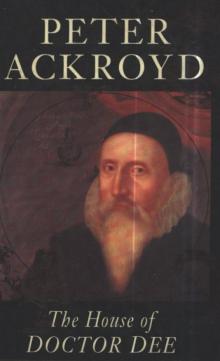 The house of Doctor Dee
The house of Doctor Dee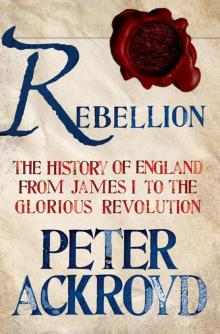 Rebellion: The History of England from James I to the Glorious Revolution
Rebellion: The History of England from James I to the Glorious Revolution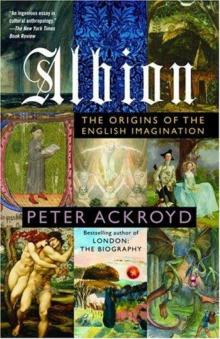 Albion: The Origins of the English Imagination
Albion: The Origins of the English Imagination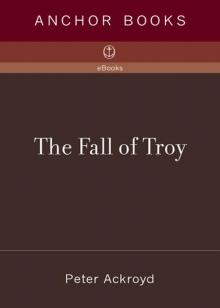 The Fall of Troy
The Fall of Troy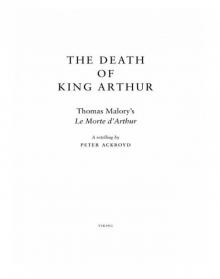 The Death of King Arthur
The Death of King Arthur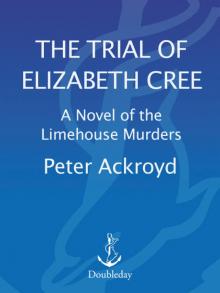 The Trial of Elizabeth Cree
The Trial of Elizabeth Cree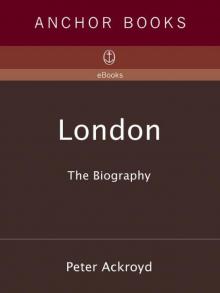 London: The Biography
London: The Biography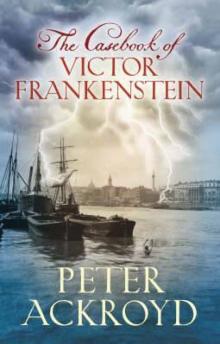 The Casebook of Victor Frankenstein
The Casebook of Victor Frankenstein Hawksmoor
Hawksmoor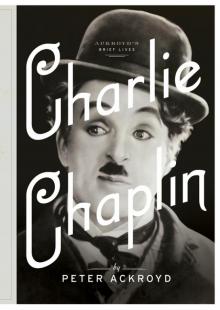 Charlie Chaplin
Charlie Chaplin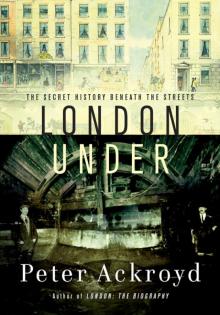 London Under
London Under